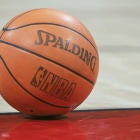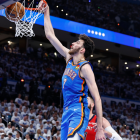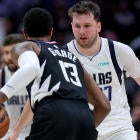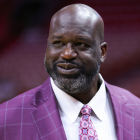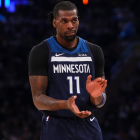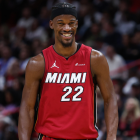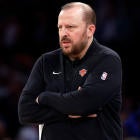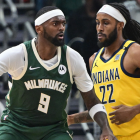Basketball is coming back, but at what cost? On Wednesday, the Florida Department of Health announced 1,317 new cases of COVID-19, the largest surge in six weeks. On Thursday, the NBA will reportedly approve a plan to resume play on July 31, with 22 teams competing at Disney World.
The league has yet to officially announce its plan, nor the logistics of how it intends to keep players, coaches, training staff and everyone else in the bubble healthy. The NBA and the NBPA are negotiating those details, according to ESPN's Adrian Wojnarowski, and the plan will include daily testing. In the event that a player tests positive, he will be isolated from the team and treated, but the team would continue playing.
There are all sorts of questions the league needs to answer, from what kind of testing it will use to what happens if multiple players on the same team get COVID-19. The fundamental question is simple: What conditions have changed to make the league comfortable with this? A tougher question is: Can it make a case for this without mentioning money?
Since shutting down the 2019-20 season on March 11, NBA commissioner Adam Silver has maintained that the top priority is the health, safety and well-being of players and staff (even though the league allowed games to continue after San Francisco had banned large gatherings and the governor of Ohio had announced his intentions to do the same). "It's about the data and not the date," Silver said in a conference call on April 17, borrowing the line from Disney chairman Bob Iger.
In determining an appropriate time to return, the league would look at the number of new infections, the availability of testing, the path to a vaccine and the development of antivirals, Silver said. Since then testing has become more widely available, but that's about it. The league must now explain how it came to its decision and how its bubble will work.
So far, we know that players and coaches in Orlando will be allowed to golf and eat at restaurants, but will be required to maintain physical distancing, per ESPN's Ramona Shelburne. In addition, according to The Athletic's Shams Charania, players will shower at the hotel rather than the arena, spread out on the bench and be prohibited from having visitors until the playoffs. Shelburne reported that hotel staff won't be allowed in players' rooms and hallways will be "carefully managed to avoid crowding."
The NBA's campus is a microcosm of life during a pandemic, in which money is in conflict with safety and ordinary freedoms must be sacrificed for the public good. How much freedom does daily testing buy? How much risk does everyone implicitly accept by showing up? If you're wondering why the league went with such a complicated format instead of simply starting the playoffs with the top 16, consider that ESPN reported the 22-team plan would be worth hundreds of millions more dollars.
It's fine to be excited about watching NBA games again, but if you care about the people involved, you should also think about the downside. The season stopped because continuing as things were would have led to people getting sick and dying; if it is going to resume, the public should know the full plan to prevent that. This is not even an argument that the NBA and its team owners are being reckless, only that the onus is on them to prove otherwise. No business, let alone those worth billions of dollars, should be blindly trusted when it comes to the safety of its employees.













